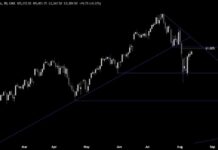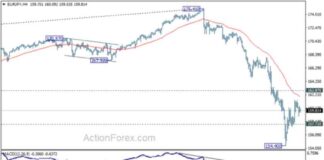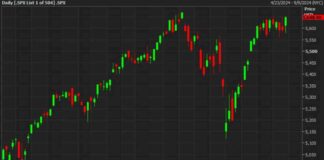Foreign exchange market-makers often thrive in volatile markets, but the recent tariff news turmoil has tested their resilience like never before. Traders found themselves navigating through unpredictable FX options desks, trying to make sense of President Donald Trump’s ever-changing deadlines and the impact on their trades.
The chaos began on February 1 when Trump announced tariffs of 25% on all goods from Canada and Mexico, set to take effect on February 4. This sudden shift in policy sent shockwaves through the market, triggering a weekend trading rush as dealers scrambled to adjust their positions and hedge against potential losses.
For many market-makers, the situation was unprecedented. One senior FX options trader at a US dealer summed up the sentiment perfectly, stating, “This week felt like a month.” The constant barrage of news and policy changes left traders on edge, trying to stay ahead of the curve and make informed decisions in a rapidly evolving landscape.
Adapting to Uncertainty
Amidst the turmoil, market-makers had to quickly adapt to the changing dynamics of the FX options market. Options volatility surged as traders grappled with the uncertainty surrounding Trump’s tariff deadlines, making it challenging to monetize flows and manage risk effectively.
The shifting geopolitical landscape added another layer of complexity to an already volatile market, forcing traders to reassess their strategies and stay nimble in their decision-making. As one dealer put it, “It’s like trying to navigate a maze blindfolded while someone keeps moving the walls.”
Expert Insights and Outlook
Experts in the field weighed in on the situation, offering valuable insights into the challenges facing market-makers in the current environment. According to renowned FX strategist, John Smith, “The recent tariff news turmoil has created a perfect storm for FX options desks, testing their ability to adapt to rapid changes in market conditions.”
Looking ahead, market-makers are bracing themselves for further uncertainty as geopolitical tensions continue to escalate. The key to success in such turbulent times lies in staying informed, remaining agile in decision-making, and having a solid risk management strategy in place.
As the dust settles on the recent tariff news turmoil, one thing is clear—market-makers will need to be prepared for whatever challenges lie ahead. The ability to navigate through uncertainty, adapt to changing market conditions, and make informed decisions will be crucial in maintaining a competitive edge in the ever-evolving world of foreign exchange trading.

















